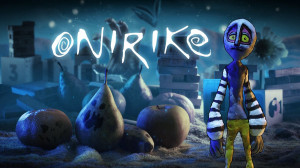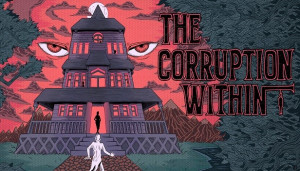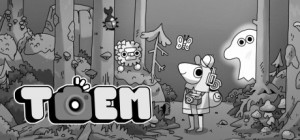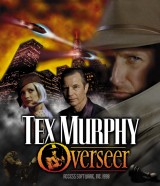Review for Unbound: Worlds Apart

The “Metroidvania” subgenre (so named for its origins in Metroid and Castlevania) is arguably more popular now than ever before, as developers continue to innovate on the concepts of side-scrolling action and puzzle solving by some charismatic little character double-jumping and dashing across expansive 2D open worlds, often gated by abilities you have yet to unlock. One such hybrid that combines twitch-based gaming with more cerebral elements is Alien Pixel Studios' Unbound: Worlds Apart, a highly challenging puzzle-platformer that's so charming and elegant, it feels like it's destined to earn a place in the pantheon of greats alongside its classic inspirations.
Soli is a little red-robed monk boy growing up in a mystical-looking forest village, a tiny flame flickering at the end of his pointed hood as he runs around this hand-painted and incredibly stylish environment. The game opens up as Soli, a loner among the other kids in the village, experiences a burst of power emanating from inside him. Involuntarily he opens a small portal to another realm, from which a magical lynx-like creature leaps out. They share a moment before the creature takes off, dropping you into the game with control of Soli and a simple goal: Follow that animal!
As you race around in pursuit of your new animal friend, you learn that the village has been built around a magical gate. It turns out your people once used the power of crystals to open portals to other worlds and travel around freely. But shortly before your birth, something terrible happened and the gates all had to be sealed. Tonight that occasion is being marked with a ritual in the center of town, and you're to attend – after you find your little visiting lynx friend, that is.
Unbound wastes no time introducing you to a peaceful, serene setting tinged with magic. A piano plinks away a pleasing if ominous little tune in the background. You can hear the babbling of a creek, the ever-present howling of wind, and the chirping of birds and insects off in the distance. The wooden huts scroll past behind Soli as the foreground shows a big stone gate with a floating crystal suspended in it. You can use either a gamepad or keyboard to run left or right as you pass members of your village, similarly robed but older and taller. You can interact with them with a press of a button, and each has some additional details about your world. There are levers to activate to open doors, and blocks to push to help you jump onto higher ledges, but the action doesn't really kick in for a few minutes more.
During a cut-scene the ceremony begins – and instantly goes wrong. The gate shatters and a portal to a dark and eerie wasteland opens up; peering out from it, two flaming eyes appear. Suddenly you're back in control of Soli, surrounded by a village in flames. There is a brief and emotionally powerful interaction with your mother before the earth splits apart and you drop into the tunnels below and encounter another glowing crystal. Upon contact with the crystal, you seem to absorb its power and the real tutorial begins. You now have – with the keyboard or the trigger buttons on your controller – the ability to conjure localized portals to the other world at will.
You find yourself trapped in a dank underground cavern as the music ceases. You can hear the scattered dripping of water and a slight murmur of wind over top of your own footsteps as you learn the ins and outs of the game’s central mechanic through small dialogue windows and simple challenges. Unlike in most games that you see you teleport wholescale from one world to another, here Soli’s portals manifest in a circle around him like an aura, changing the environment within it. Instead of the mystical forests and caves of Soli's home, you see jagged rocks and fiery hellscapes in the other realm, while the rest of your immediate environment remains untouched. The landscape on the other side of the portal is structured much like Soli's, but with slight differences. You may see water in one place and a traversable surface in the other, or perhaps a platform in one and a chasm in the other. The crux of the gameplay, as you quickly find out, is in switching between the two worlds to overcome obstacles.
As you seek a way out of the cavern, you will need to master the use of your portals in increasingly difficult or strategic ways. There may be platforms or gates situated in such a way that you have to switch back and forth between worlds in the middle of a jump. Some creatures that are dangerous in your realm will become harmless through the portal, turning into things like blocks that can be pushed. Or the opposite could be true, and what is a peaceful butterfly in your world can turn into a devastating hell-beast in the other. There are often enemies lurking in the dark realm that will try to attack you as long as the portal is open, so you may need to time your portals perfectly without falling prey to their dangers. Fortunately for a game that requires such twitchy and precise action, control is smooth and as seamless as possible. You’ll rarely find yourself at a load screen, and the backgrounds drift past nicely as you tackle the numerous challenges.
These ideas become more complex as the game goes on. At one point you will pass through gates that block your ability to cast portals, and when you exit on the other side you'll find that your portal powers have been changed significantly. In one area, every time you activate a portal, gravity flips and you fall upwards toward the ceiling. In another, the scene is pitch black and the portal triggers automatically every time you stop moving, revealing a circle of light to show your environment rendered in stark black-and-white. In yet another, Soli shrinks to a quarter of his usual size and can move faster and fit through smaller openings, while still another doubles the speed of projectiles passing through portals.
Wherever you go, it's worth experimenting to see the different ways your portals affect individual aspects of the landscape. In some places a fungal pod may become a spiky death trap, while elsewhere it's a bouncy little tuft that can propel Soli high into the air. In a particularly interesting instance, a deadly fireball in Soli’s world turns into a bubble that can pick up the young protagonist and float him over difficult terrain. In the roughly six hours of gameplay across three different vast, intricate worlds (and three smaller “bonus” worlds accessed from the other side of your portals), Unbound never stops surprising you with new things to learn about the portals and their uses. Even up to the last level, you’ll still be discovering one or two new useful (or dangerous!) things about the portal mechanics. This steady stream of differences keeps the experience fresh and interesting right up until the final boss fight.
Yes, the game does have a few bosses that function as climaxes to each major section of the map, although Soli never has any weapons or direct means of attack. Instead you will be locked in rooms with large monsters trying to kill you, and you’ll have to use your portals and the environment creatively to do damage to them. Soli only ever has one “hit point.” This can be frustrating in battle, as the sequences must be completed perfectly or you’ll need to start over from the beginning. The rest of the game also requires a lot of attention, dexterity, and quick thinking through tricky scenarios, but all deaths are followed by lightning-fast respawns mere moments from where you died. The game doesn't inform you of its checkpoints, but they're generous and always restore you to a spot just before you succumb to an obstacle.
In the grand tradition of Metroidvania, throughout Unbound you will unlock certain other abilities that make the experience more complex as well. You’ll get a double-jump, a wall grab, and the ability to dash forward in mid-air – standard fare for this type of game. As you acquire new abilities, you will have to remember places you passed earlier and backtrack to find either secrets or crucial new locations branching off of the path you took originally to progress. Thankfully, as you explore you will encounter teleportation devices that can zip you to locations you’ve visited previously in an instant. These teleporters – large floating cairns – appear at pivotal points around the map and unlock when you run through them, so when it's time to backtrack you can usually choose a destination cairn pretty close to wherever you need to go.
The main goal of the game is to collect crystals that will open (or close) gates to the dark world in order to, eventually, face the evils on the other side. Your final challenge is to travel to this nether-realm, which serves as a kind of final exam in which your mastery of all the different portals and powers will be put to the test. Before that happens, you’ll periodically link up with your talking animal companion, who becomes a sort of spirit guide encouraging you along the way and giving you extensive background lore about Soli's interesting magical realm through short bits of dialogue. You’ll also meet scattered wanderers who tell you sad stories of being separated from their homelands when the corruption began to spread.
The story of Soli becoming the hero of his people never really feels like the main attraction, but it does have some effective moments and there’s plenty of world-building background if you want to dive into it. As you learn about the struggles of the villagers you meet on your journey, their woes can tug on your heart strings and fuel your drive to save their society. The “collectibles” here come in the form of monks hidden around the map in unexpected places or locations that present specific (and often infuriating) challenges to reach. Each of these monks divulges a bit of poetry that deepens your understanding further. I was never fully absorbed in the narrative, but perhaps that’s because I was far more enraptured by the extremely fun and addictive gameplay.
The art is another notable triumph of this game. Each location is highly atmospheric and crammed full of detail. Some are gorgeously scenic, like lovely forest groves and ancient moss-covered stone temples, while others are much creepier and more menacing, from murky swamps to the bone-littered depths of a hellish underworld. Some colors really pop as the palette changes in every new area, cleverly offset by contrasting views from inside the portals. Soli himself is an adorably designed little creature who is a joy to control. His motions are precise and the small flame bobbing at the end of his hat is a constant beacon of cuteness, even in the darkest of locales. Accompanying the action are pianos and soft strings that create either pleasing soundscapes for exploration, or dramatic cinematic scores that keep you on the edge of your seat during the more intense moments of gameplay.
While far from a traditional adventure, this game is a triumph of puzzle-platforming. Some may justifiably be put off by the occasionally harsh degree of difficulty and quick action sequences – get used to dying A LOT – but fans of Metroidvanias will definitely find a lot to love here. While the story is rarely very impactful, the gameplay most definitely is, continually adding new elements to keep things fresh from beginning to end, and it’s all wrapped up in a beautiful side-scrolling aesthetic. The binding together of these elements in Unbound: Worlds Apart makes for a fun and interesting escape, provided you have both kinds of skills needed to achieve it.


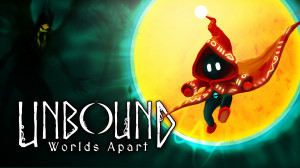
_capsule_fog__medium.png)











